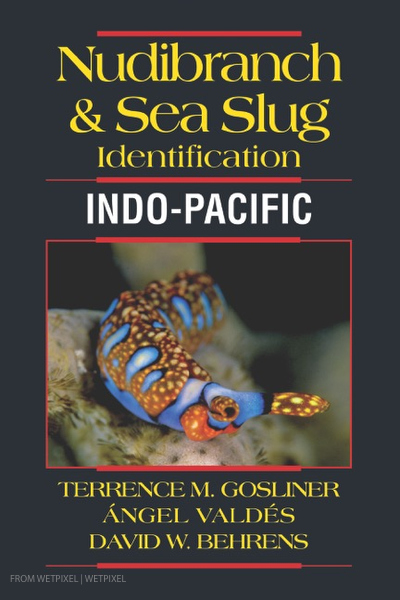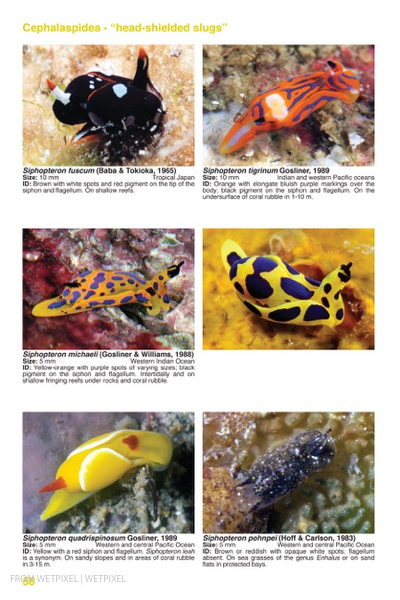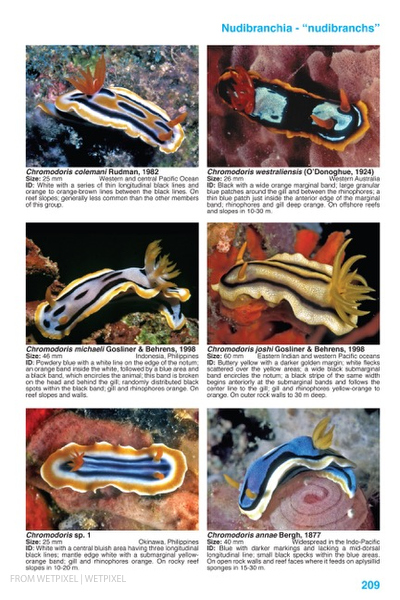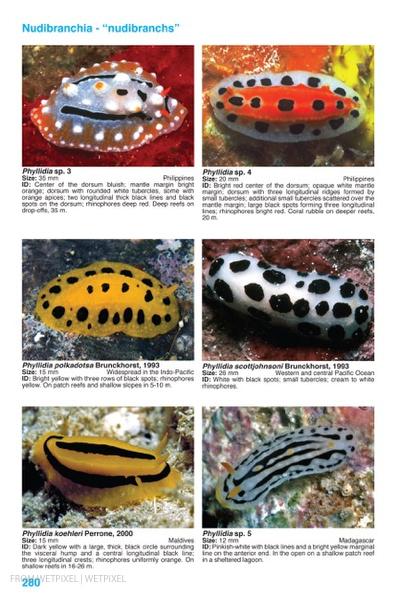Book Review: Nudibranch and Sea Slug Identification - Indo-Pacific

Most macro photographers seem to have an obsession with not only photographing ever more esoteric and bizarre subjects, but also with identifying and cataloging their subjects. The Critter ID forum on Wetpixel is an amazing venue for sharing and identifying tricky subjects but keen macro photographers will often also own a serious library of reference materials. As a subject for macro shooters, nudibranchs must rate as one of the most photographed critters.
Nudibranch and Sea Slug Identification - Indo-Pacific, compiled by Terrence Gosliner, Ángel Valdés and David Behrens was originally published in 2008. It represented an illustrated field guide to over 1,500 opisthobranch (nudibranchs and other sea slugs) species. The geographic area covered by this book was the entire Indo-Pacific which is the largest expanse of tropical ocean in the world, stretching from the Indian Ocean coast of southern Africa and the Red Sea to the central Pacific of the Hawaiian Islands, Easter Island and the Marquesas. The region supports the most diverse marine fauna of any place in the world for most groups of organisms. There are about 3,000 described species of opisthobranchs in the world with at least 40% of these have been found exclusively in the Indo-Pacific tropics.
In October 2015, New World Publications published a revised and updated version of the guide. The same author team has added a further 500 species, bringing the total number described up to 1,953. This represents a huge body of information and makes the book an essential tool for those interested in identifying nudibranchs and sea slugs, both within the Indo-Pacific and the greater marine environment. The book has over 2,248 photographs over its 408 pages.

The book commences with an introduction discussing both the scope of the book and some general points about opisthobranchs in general. The authors are keen to emphasize that the geographical boundaries of the book reflect the species described, and set out in some detail the exact nature of these boundaries. It goes on to describe the phyolgeny of the nudibranchs and sea slugs and how this affects their classification and taxonomy. Further topics include evolutionary trends, basic biology, the reasons for the amazing coloration of many of the creatures, and how they are distributed around the Indo-Pacific. Lastly, the authors make a call to action for the preservation of coral reefs, underlining the fact that we are in the midst of a mass extinction caused by human (in)action that will results in the loss of coral reef habitats within the immediate future: “The future is in our hands, and we must act now”.
The bulk of the book is separated into 10 color coded sections, each dedicated to a phylogenetic group. For example, the first section, which has pink as its color key, describes Acteonidea species, the final section (and by far the largest), Nudibranchia is color coded blue. This helps navigate through the contents. Each individual section is also prefaced with a brief description of they species, for example the Nudibranch section is prefaced:
“With more than 6,000 species this is the most diverse group of sea slugs. Nudibranchs have colonized all marine environments and include some pelagic species. They are all characterized by lacking a shell in the adult state”
In the case of nudibranchs, the group is subdivided into Doridoidea and Cladobranchia and then further into the six families associated with Nudibranchia.
Each individual species features an image and its full scientific (taxonomic) name. There are no common names described. It also lists the year it was first described, the size of the animal, and its distribution within the Indo-Pacific. Lastly, it offers a description of its unique characteristics, where it tends to be found, and any additional information that relate to the species.

This is an advanced book and while it is fascinating to those starting to embark on their journeys of critter ID discovery, is somewhat daunting to use. Quite simply, it is definitive in many respects.
The lack of common names is, I suspect, deliberate. Within scientific circles, the fact that common names vary from place to place means that the only absolute reference has to be its taxonomic name. For those that are used to dealing with the multitude of species that are contained with the opisthobranch group, this is perhaps less of an issue, but it may require those using the book for the first time to consult an alternative source to reference more common names.
The volume of information and number of species described in this book are somewhat daunting unless you are fairly familiar with nudibranch species. It seems to be a pretty definitive reference and will be the book that nudi aficionados turn to in order to identify esoteric species and to resolve arguments over a particular sighting! It does not have offer any sort of key to enable the user to sort possible identifications, so relies on a base knowledge of species instead.

If you are a seasoned opisthobranch expert or want to become one, this book provides an amazing amount of information and detail. Simply capturing and identifying the incredible number of images contained in it represents a huge volume of work. The authors are to warmly congratulated both for this effort, and the academic rigor that have applied to writing it. For the user, if you are finding books like the excellent Reef Creature ID - Tropica; Pacific limiting in helping you provide identities to your opisthobranch subjects, this is an excellent way to provide a more advanced and thorough search.
Nudibranch and Sea Slug Identification - Indo-Pacific is available now from New World Publications and other reputable book sellers and dive shops. It is priced at $60.00
FTC Disclosure.
A copy of the book was supplied to the reviewer free of charge for this review.